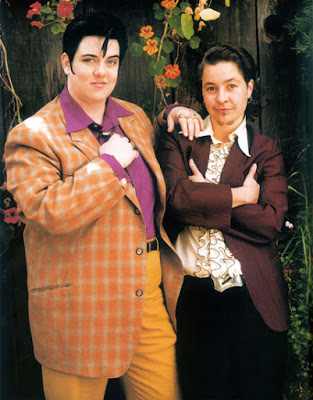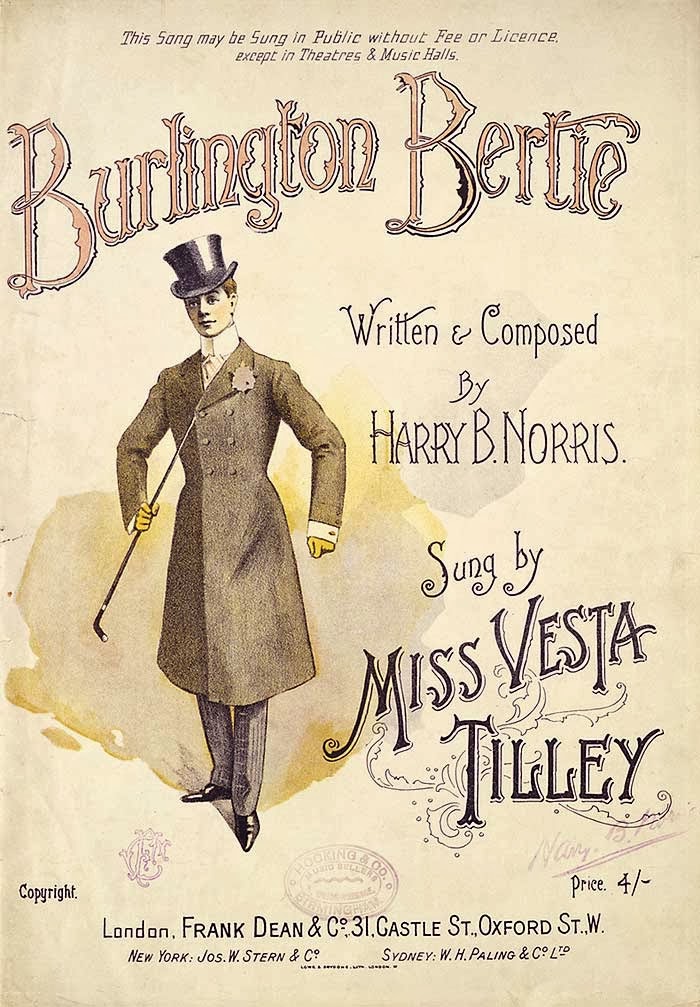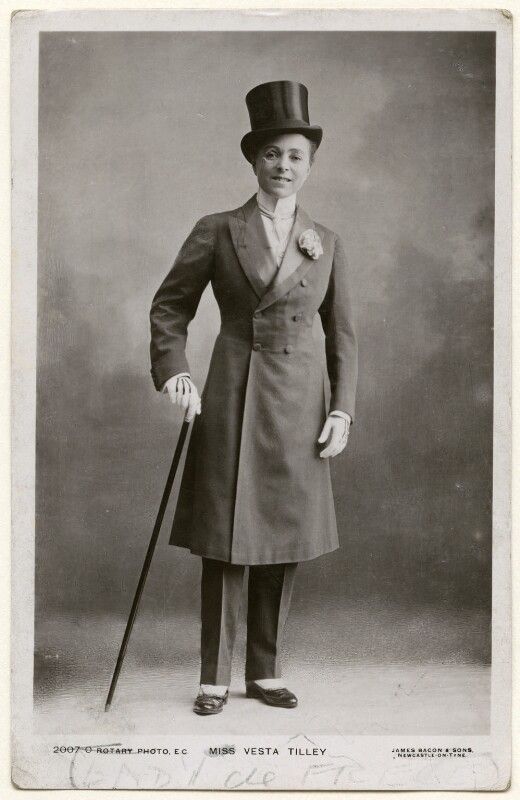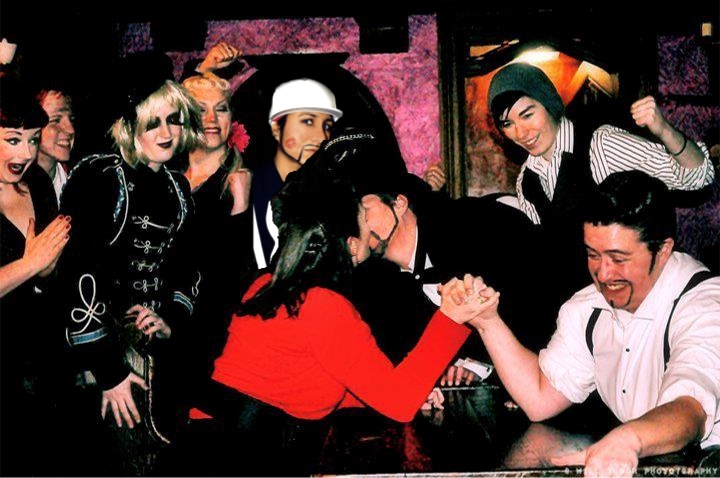Drag Kings
by Siobhan Donegan
Having previously written a series of articles on the history of ‘Drag’, from the perspective of female impersonation, it has been my intention for some time to write about the less well known culture of Drag Kings. The specific term ‘Drag King’ in contradistinction to ‘Drag Queen’- is in reference to individuals who dress in the clothing that is stereotypically associated with masculinity and usually, but not always associated with the performance art of Drag. The attempt to temporarily pass as men-and individuals presenting themselves in a masculine gender role without necessarily identifying as men-is included in the usage of the term.
 Drag Kings in the same manner as Drag Queens, are performing artists who attempt to parody masculinity in their presentation-performance. Methods employed by some Drag Kings can include binding breasts with binders, bandages or tight fitting sports bras, while some Drag Kings have also made an art of creating the illusion of facial hair, drawing it on with eyeliner and also applying dark eyeshadow for the unshaven look. Furthermore, Drag Kings-as part of their performance can often include ‘exaggerated macho-male characters’, or include impersonation of famous male stars such as Elvis Presley.
Drag Kings in the same manner as Drag Queens, are performing artists who attempt to parody masculinity in their presentation-performance. Methods employed by some Drag Kings can include binding breasts with binders, bandages or tight fitting sports bras, while some Drag Kings have also made an art of creating the illusion of facial hair, drawing it on with eyeliner and also applying dark eyeshadow for the unshaven look. Furthermore, Drag Kings-as part of their performance can often include ‘exaggerated macho-male characters’, or include impersonation of famous male stars such as Elvis Presley.
The popular usage of the term Drag King, which didn’t actually appear in print until 1972, emerged in the 1990’s simultaneously to the diversification of gender queer identities, in contradistinction and some would say ‘opposition’ to the heteronormative gender binary. Drag Kings have also taken on an activist role in ‘gay, lesbian and queer cultural spaces’ not just in the form of organizing Drag King contests, but also running ‘gender workshops’. It should be noted as such, that as a phenomenon Drag Kings have emerged-to a large extent-from lesbian culture. However, this does not mean that all Drag Kings are lesbians-or involved in lesbian subculture- from the perspective of politics etc.
Having partly defined the phenomenon of Drag Kings I think we should briefly look at its history. The history of women performing as male impersonators is entwined with the history of the Theatre and Opera-and this tradition was known as ‘breeches roles and ‘en travesti’’. In 1700 Susanna Centlivre who was an Actress and Playwright appeared in a breeches role. Also, it should be noted that like the history of Drag Queens-Drag Kings also have a connection with British Pantomime which had a tradition of women performing male roles. Lastly here, in the late 19th and early 20th centuries a number of Drag Kings became British Music Hall stars.
However, it should be noted that British Music Hall male impersonators, such as Vesta Tilley, the history of these performers dating back to the 1800’s, were obviously for the entertainment of straight audiences, something which has radically altered today.
In the U.S. Theatre the first male impersonator was Annie Hindle, who in 1867 achieved popularity with her routine in New York. In the late 19th and early 20th centuries the above mentioned Vesta Tilley British Music Hall performer had an act as a male impersonator. Ella Shields and Hetty King also emerged as male impersonators of the British Stage.
Returning now to the subject of Drag King culture in general; within the Drag King community, the practical utilitarian need to form ‘collectives’-performance troupes-ensembles, is based on the economic necessity of being able to book shows. As such, Drag King performing troupes are in sharp distinction to Drag Queen solo performers who have made individual names for themselves. However, as Drag Kings are finally getting more recognition this is slowly beginning to change. As such individual Drag Kings are getting bookings outside of the troupe stereotype.
It is in fact only recently that Drag Kings have become more visible in the LGBT community. This has been perceived as a Drag King ‘renaissance’ and described by ‘Sleek Magazine’ in an article on Drag King culture as a ‘revolution’.
In reference to the above mentioned diversification of gender queer identities, it should be mentioned in this context-that some individuals involved in this performance art-explain that Drag King culture is for them a starting point to transition to a ‘Transgendered identity’. As such it should come as no surprise that Drag Kings usually prefer the use of male pronouns whilst in their male persona. However, others see their Drag performance as a means to allow the outward expression of an inner part of themselves’ which is masculine. The truth is of course that Drag Kings can have diverse gender identities or forms of gender expression; such as women, transgender, genderqueer or ‘butch’.
Also there have been developments in Drag King culture in the recent past. One example being in 1999 Columbus, Ohio in which was founded the International Drag King Extravaganza-IDKE which is a premiere annual conference for Drag Kings, which has since evolved into a traveling event. ‘Lesburlesque’ is another example of an organisation emerging out of Drag King Culture in general. This is a British lesbian Cabaret organisation founded by Pixie Truffle. This group has made it their goal to promote further inclusion for Drag Kings on the British Cabaret circuit. Truffle also stated her desire-during an interview-to bring Drag Kings, Queens and stand-up comedians closer together.
As for the term ‘Drag King’ itself-although most Drag Kings still traditionally refer to their performance as ‘Kinging’, other terms have more recently been adopted, such as ‘gender blurring’. However, this term also refers to a mixture of and deviation of not just gender expression but also a deviation in performance style. Furthermore the gender ambiguous term ‘Drag Thing’ has been used by Vancouver performer Rose Butch.
Just as Drag Queens parody femininity and obviously Drag Kings parody masculinity-as a comment on this one online writer described it-this ‘expose the construction and fluidity of gender’. However, critics have made the observation, generally speaking, that there are ‘disparate implications’ with often gay men performing as Drag Queens and gay women performing as Drag Kings as we still live, for the most part, in a patriarchal culture.
Finally, I didn’t really want to end on such an ambiguous note, so I just wanted to mention some famous modern Drag King performers; we have the wonderfully named Elvis Herselvis, Mildred ‘Dred’ Gerestant and Murray Hill.




